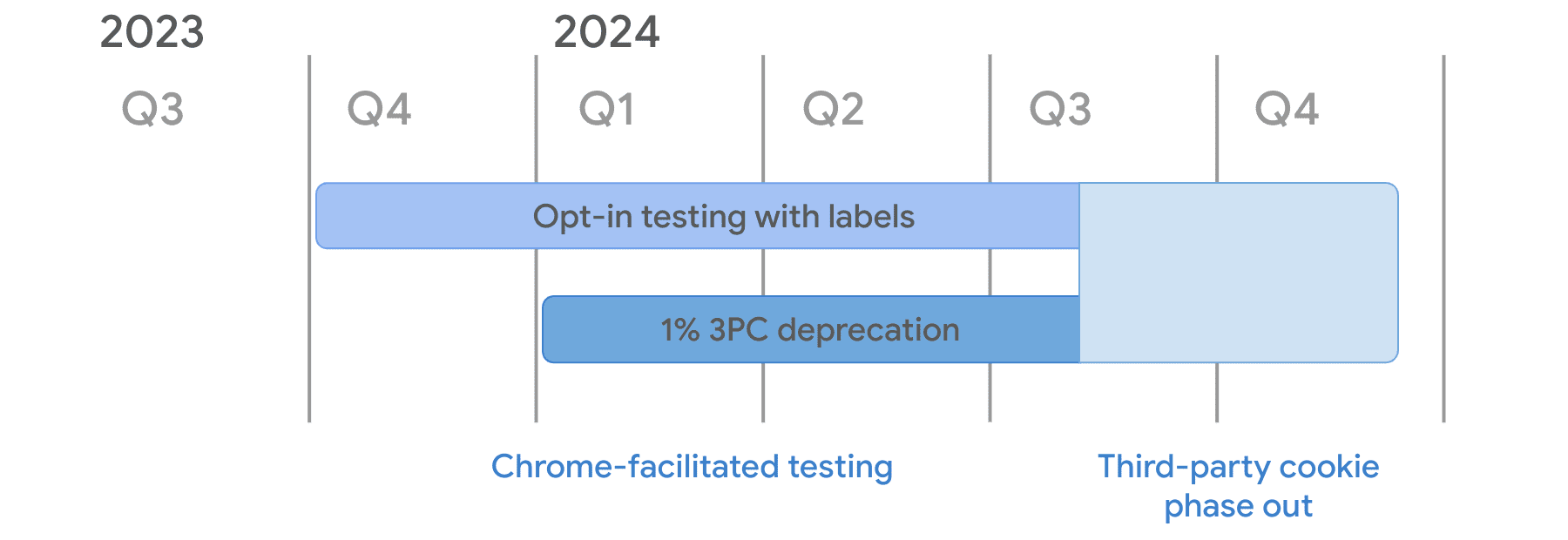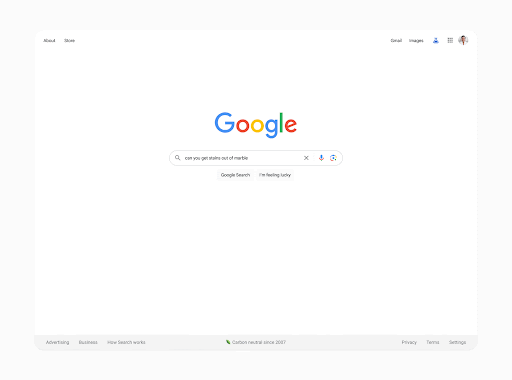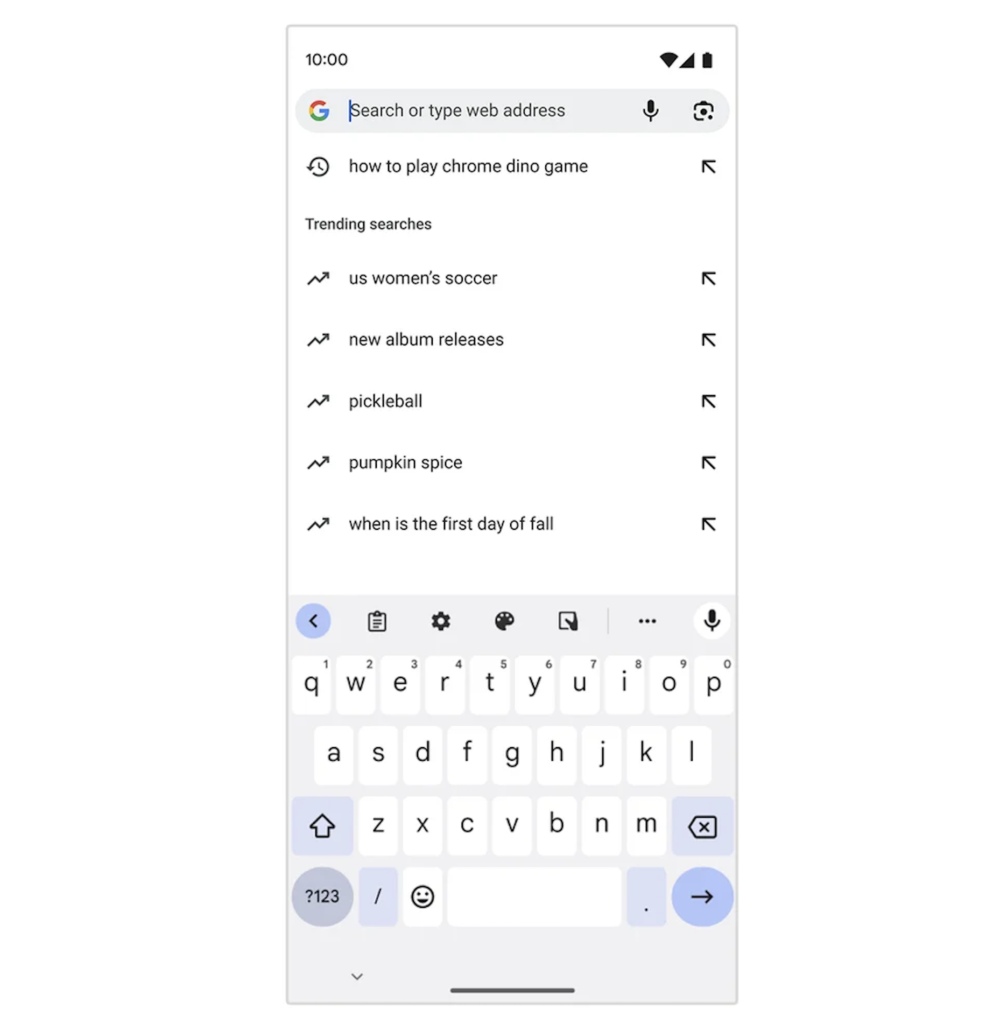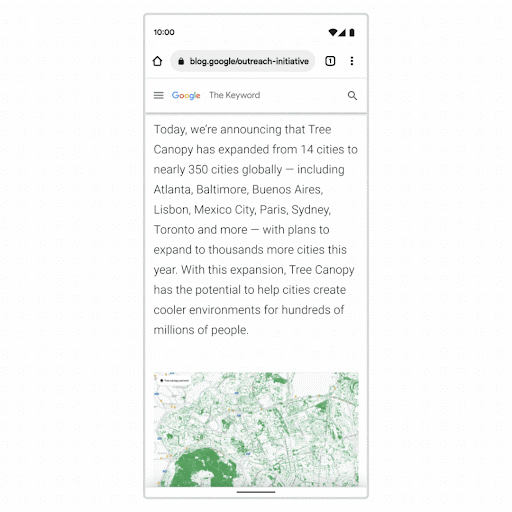Google’s Third-Party Cookies Deprecation Rolls Out Today
Cookies are the currency of the world of digital advertising. At least that’s how they were once. Now is the time to get ready to phase out third-party cookies and begin using cookie-less strategies. Making the switch to contextual advertising will now require getting ready for a world without cookies.
Beginning today, January 4, Google intends to remove third-party cookies from its Chrome browser by the end of 2024. With 1% of cookies impacted, the tech giant has planned a gradual phase-out that will begin today and give marketers time to adjust before the full removal by the end of the year. Publishers’ and advertisers’ interactions will undoubtedly change significantly as a result of the gradual removal of cookies. It represents a significant policy shift and a move towards privacy-focused transactions.
Google’s third-party cookies phase-out plans
As part of a pilot program, Google will begin gradually phasing out cookies for 1% of Chrome users starting today. To prepare for the big show, Google’s masterminds will observe, evaluate, test, and reorganize. Understanding the nature of the cookie-less environment and its practical implications will be greatly aided by this small-scale deprecation. Although Google did not immediately disclose the precise number of cookies for the impacted internet users, it is possible that up to 30 million cookies are in place. Despite being gradual and phased out, the phaseout would be finished by this year’s second half, most likely in Q3 2024. If regulations allow, Google intends to remove third-party cookies for all Chrome users.

Image credit- Google
A major shift in the advertising world
Google wanted to allow publishers and advertisers ample time to get ready. Thus, the delayed launch. This will compel significant adjustments to the way digital advertising functions. Some worry that it might force websites to use more obscure tracking methods. Given how heavily the digital advertising sector depends on third-party cookie tracking, the news is probably going to cause controversy. Certain ad tech companies may lose their present capacity to gather data. Rather than being genuinely excited, the advertising industry’s anticipation can best be described as cautious skepticism. It is independent of the segment of the advertising business, be it browsers or ad tech providers.
Origin of third-party cookies
Originally, the goal of third-party cookies was to provide website users with more specialized advertisements. Rather, they evolved into something that was frequently centered on obsolete consumer behavior. To generate behavioral profiles, cookies were combined. Because of retargeting and open conversion loops, website users would still see ads for items they had previously browsed six months ago.
Read More: Google’s Phasing Out of Third-Party Cookies: A Paradigm Shift in Digital Advertising
How does the advertising world perceive this?
At the moment, the Privacy Sandbox is not a problem for any ad tech providers. Some vendors may view the partnership with Sandbox as a calculated move to remain relevant and competitive in light of Google’s strong market position. This decision was made easier by the testing grants Google is providing. That being said, some businesses aren’t as welcoming. They are unwilling to support the Sandbox as long as they believe it will further reinforce Google’s supremacy over the advertising industry.
With this first rollout, advertisers, publishers, and creators should take advantage of the chance to test and modify their strategies to effectively adjust to this change. Although the digital advertising industry has had nearly four years to plan, it is now necessary to develop flexible and adaptive approaches to determine what works and what doesn’t.
Important Alternatives to Cookies
It’s safe to say that there are a lot of interesting and complicated third-party cookie alternatives available. Shifts on this scale leave alternative identities in a constant state of change. They face difficulties with privacy compliance, interoperability, and measurement and targeting efficacy. Even the front-runners struggle with personal issues.
First-party cookies
To get ready for a world without cookies, advertisers need to gradually wean themselves off third-party data. To address this, first-party data-based solutions must be adopted, enabling advertisers to use their own, consenting user data for targeting. Instead of cookies, publishers and advertisers are experimenting with several first-party data-based solutions.
In the world of digital advertising, first-party cookies are a tactical turning point. Because they are site-specific, these cookies are ideal for meeting the requirements and preferences of different publishers and websites. Everything is connected to Google’s Privacy Sandbox program. The main focus of this large-scale project is privacy compliance. It seeks to satisfy cross-site use cases without using third-party cookies or other tracking mechanisms while balancing the needs of digital advertising with the privacy of individuals.

Image credit- Campaign Asia
Hashed emails
User email addresses are necessary for a hashed email solution to work. A user provides a wealth of identity and online behavioral data when they log in with their email address. This crucial information, which is now hidden by an encrypted identifier can be shared further up the chain with media buyers for more precise targeting. It can be pushed through a hashed email API and ensures that user data is fully secure. Ad tech companies first proposed hashed emails as a substitute for third-party cookies.
Read More: Yahoo Partners with VIOOH for prDOOH and Twilio for First-Party Ad Reach
Contextual data
One more of these alternative methods for third-party cookies is to use contextual data, which provides perspective about an online user rather than presumptive behavior. Contextual data assists advertisers in making decisions based on the content a user is currently consuming rather than previous behavior in this way. In addition to being frequently more effective, contextual data is also less expensive to obtain than third-party data. Generally speaking, contextual ad impressions are less expensive than behavioral ones. Given that the targeting is based on context and recency rather than legacy behavior, it can also aid in providing a better user experience.
APIs
Google is testing APIs. These include the “first locally executed decisions over groups experiment” (FLEDGE) and the Topics API, which have taken the place of the Privacy Sandbox’s initial federated learning of cohorts (FLoC) proposal. After analyzing a user’s three weeks of content consumption in an anonymous manner, Topics creates five “Topics” every week, one of which is sent in response to an ad request. The FLEDGE API auctions don’t rely on following users around websites because they operate directly within Chrome.
Retail Media Networks
Another cookie-less option that has emerged is retail media networks. Through these platforms, advertisers can reach more niche audiences and gain access to first-party data, including loyalty and point-of-sale data. By expanding the scope of this first-party data outside of the retailer’s owned and operated properties, RMNs assist advertisers in reaching in-market consumers without the need for cookies.
Chartering the course in the future.
The ad tech industry has entered uncharted territory with Google’s third-party deprecation. Everyone is wondering what the world will look like when the last third-party cookie disappears. There’s no denying that this ushers in a new era of digital advertising where privacy is crucial. Publishers will need to adjust to first-party cookies and other practices like hashed emails, and advertisers will move toward more content-based and contextual approaches.
Businesses of all sizes will need to be inventive and flexible to succeed in this new era. This entails making investments in fresh platforms and technologies that can adapt to the change and create new opportunities for efficient audience targeting without compromising user privacy. It’s not all bad news, though. A plethora of prospects lie ahead of us. Recall that in the cookie-less future, flexibility is essential.
Read More: GroupM and Google Announce Post Third-Party Cookie Readiness Program
Google’s Triple Treat- Unleashes a Trio of Updates to Elevate User Experience
Google is embracing the future of greatness. Three game-changing changes from the tech superpower will revolutionize user experience across platforms. These updates, which range from enhanced usability to seamless disruptive capabilities, will enhance user journeys to a higher level. This article explores in detail these innovative improvements that will affect our online life.
Generative Search Experience Update
The AI-generated answers in Google’s latest search generative experience can now display playable videos in addition to photos. Google stated in their blog, “With our generative AI-powered Search experience (SGE) you can quickly get up to speed on a new topic, uncover quick tips for your specific questions or discover products and things to consider.” Google has included generative AI in its search engine so that users can benefit from it. The upgrades that will simplify your life are listed below.
Enjoy images and videos with your searches
It’s been said that seeing something for oneself helps one grasp it better. Google recently added images and videos to its search results, and individuals who have joined Google Labs will soon be able to access the upgrade. As a result, when someone queries something, it returns relevant material including photographs and YouTube videos in addition to a text description. For instance, if consumers look up how to remove stains from marble, they can easily find guidance and pertinent material online.

Credit: Google
Amplify Curiosity
Users can search the web for useful information when particular topics pique their attention. Google offers them relevant links to aid in their search results along with an AI overview. Additionally, each link on the website has the published date attached, and they are constantly working to improve the AI model.
Turbocharge your insights
Google recently revealed significant speed improvements that cut AI snapshot time in half.
Google AI updates indicate the sources it has accessed information from, setting it apart from rival AI chatbots like ChatGPT. It is useful to cite and refer to links when researching.
Doesn’t it all sound cool? But wait, there’s more!
Mobile Lookup Updates
In order to improve users’ search experiences on the Google mobile browser, Google has unveiled additional updates. With expanded search concepts, popular and trending topics and themes, and other improvements, searching is now simpler.
Google’s Search Serenades
Google now provides search suggestions pertinent to the website the user is currently browsing. “Related to this page” is the feature’s name, and it offers consumers additional options to look through.

Image Credit- Search Engine Journal
The Google Trendspotting journey
The upgrade also makes it easier for users to access address bar-based trending topics and searches. The iOS version of this feature will be released later this year, but it is only available in the Chrome browser for Android.

Image Credit- Google
Search for similar terms
Users may now search for a word or term immediately from the page they are currently viewing thanks to Google’s touch-to-search upgrade. This was introduced a few years ago on Android. Now that the tool has been updated, they can use it to get relevant search results. For instance, the user can select a word and learn more about it. This is if they are reading about a subject and come across a term that interests them.

Credit: Google
Intensify your search
In addition, users will be able to view 10 queries rather than just six suggestions to improve their search experience. The first results will be those most pertinent to the search query. After that, visitors may scroll down to search for further possibilities.
Google Analytics 4 Updates
Google has released several enhanced capabilities on the Google Analytics 4 platform. These capabilities are aimed at improving campaign optimization and helping advertisers better understand user behavior patterns. The upgrade offers enhanced metrics, particularly for iOS campaigns, and a deeper look at targeting tools and performance uplift possibilities. This is how app marketers will benefit:
Audience tools
Unnotified audience suggestions
This tool will help untap the audience of the current app to target those users who are not reachable via push notifications. Only 37% of users enable push notifications, according to Google, meaning brands are missing out. This technology allows marketers to interact with users when they download apps

Image Credit- Google
Relevant app users
Google will automatically identify the most appropriate app consumers for the app engagement promotion if the advertisers have set up a demographic in GA4 for both app and web users.
GA4 Audience Builder in Google Ads
Google will offer the option to create effective GA4 audiences directly in Google Ads during ad campaign setup in the upcoming weeks.
Improved performance
App marketers may automatically enhance app campaign metrics using consented, signed-in data. Google’s experimentation analysis shows that app campaigns generated 10% higher conversions for every dollar spent. Through the GA4 property, advertisers can activate Google Signals to make them available.
Improved marketing optimization for iOS
In order to help marketers better understand the efficacy and measurement of their iOS initiatives, GA4 makes privacy-centric solutions possible. This is how-
- To enhance multichannel reporting and inference, GA4’s feature enables app integration with SKadNetwork. Additionally, it offers a tool for setting up the SKadNetwork so that conversion data is gathered without identifying information escaping the user’s device.
- By including a consenting user’s phone number as a sign-in method, advertisers can optimize their campaigns more effectively.
- With geo-targeted conversion lift measurement, advertisers can now measure iOS app advertisements’ gradual effects with increased accuracy.
With these innovative enhancements, Google simplifies the user experience and puts every search, trend, and recommendation at our fingertips. With these modifications, the tech giant is becoming more empowered, perceptive, and motivating. Only exciting times lay ahead for the users as Google keeps expanding and experimenting with technology to stay relevant in the ever-evolving landscape.
Read More: Google Ads Enhances CTV Advertising



